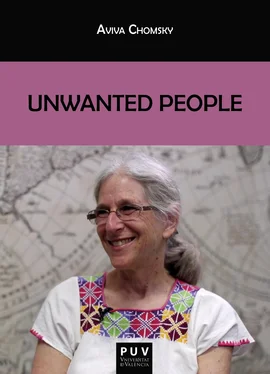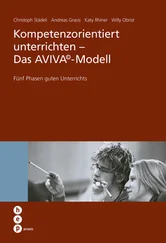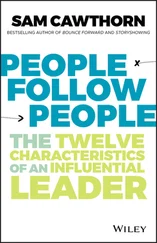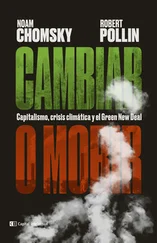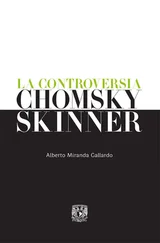This paper draws on interviews with organizers from three different Boston-area Worker Centers: The Chinese Progressive Association, which founded one of the first Boston Worker Centers in 1987 in support of workers displaced by a factory closure, the Chelsea Collaborative, which began its Latino Immigrants Committee focusing on workers’ rights in 1998, and the Brazilian Women’s Group, which began its workers’ project around 2010, to explore these organizations’ achievements and the challenges they face.
A new generation of immigrant workers in Boston
As Michael Piore argued in 1973, industrial Boston’s labor force was continually replenished with migrants, from Europe in the nineteenth century, then from the rural South and then from Puerto Rico into the middle of the twentieth. These workers filled the lower ranks of the city’s jobs, though the nature of these jobs changed over time as manufacturing declined in the city. Today most of Boston’s immigrant workers, like most of its workers overall, labor in the service sector. Like native workers, immigrants are bifurcated. Highly educated immigrants have moved into professional positions in finance, health, technology, research, and education, while the much larger population of migrants toil in the hidden interstices of the glittery new economy. They process, package, and serve food; they deliver newspapers; they clean homes, offices, hospitals, and yards; they work for subcontractors in construction; and they care for the disabled and the elderly.
Boston’s first significant Latino immigration came from Puerto Rico in the 1950s and 60s. The Puerto Rican population of Boston levelled off after 1970, counting 37,553 in 2014. 1 Soon Puerto Ricans were joined by tens of thousands of new immigrants, mostly from Latin America and the Caribbean but also from China, Vietnam, and India: the share of Boston’s population that was foreign-born hit its low in 1970 and has risen steadily since then. 2 The number of foreign-born rose to 151,836 in 2000, and to 177,461 by 2015. 3 In 2014 27% of Boston’s population was foreign-born. 4
The top sending countries in 2015 were the Dominican Republic (13%), China (10.6%), Haiti (7.6%), El Salvador (6.3%), Vietnam (6.2%), Jamaica (4.4%), Cape Verde (4.4%), Colombia (2.8%), India (2.2%), and Guatemala (2.2%). 5 In terms of race, 29% of the foreign-born identify as Hispanic, 24.8% as Asian/Pacific Islander, 24% as Black, 16.9% as white, and 5% as Other Race. Populations of color in Boston, especially Asian and Hispanic, are disproportionately foreign-born, while the white population is overwhelmingly native-born. Only the Black population has relatively equal proportions in the native and in the foreign-born categories. 6 27% of the foreign-born in Boston live in poverty, as do 21% of the native-born. 7
In 1995 Andrés Torres examined Latino immigrants in Boston’s labor force, discovering a much larger and more diverse population than Michael Piore had found two decades earlier. The number of Hispanics employed in the state of Massachusetts rose from 21,000 in 1970 to 44,982 in 1980 and 83,000 in 1990. In 1995 Boston was home to 58,000 Latinos. 8 Yet Torres lamented what he saw as a “awkward and often uneasy relation between Latinos and labor,” calling this a “sad irony in this discrepancy in light of the deep tradition of labor struggle in Latino countries of origin, and the overwhelming working-class composition of commonwealth Hispanics.” 9 Like the Puerto Ricans that Piore studied 20 years earlier, Boston’s Latinos in the early 1990s were concentrated in low-wage positions. Some still worked in the lower ends of the manufacturing sector, but given the overall transformation of Boston’s labor market, many also worked in the burgeoning low-end service sectors, with 69% working at these low-wage jobs. 10
Torres confirmed earlier analyses of the divide between Boston’s unions and its black and immigration populations. But he added a new element, which became key in the subsequent formation of Worker Centers in the city. Green and Donahue had alluded to this issue when they examined some of the organizations formed by workers of color and women in the 1970s, like 9 to 5, the United Community Construction Workers, and the Third World Workers Association, all of which fought for their rights in the workplace and beyond.
Torres explained that “for Latinos, the community, not the workplace, is seen as the focal site for organizing activities. Struggles over educational, health, and housing services claim their energies; the battles for political empowerment have greater mobilizing appeal... Straightforward class appeals, emphasizing economic issues alone, will fall short because they ignore the cultural chasm separating the newcomers from the dominant culture of the larger society. To attract the ‘outsiders,’ labor has to transform itself, sharing power from top to bottom. More important, it must insert itself into the life of minority communities economically and socially.” 11 Boston’s Worker Centers, like those elsewhere in the country emerged to fill precisely this niche.
Worker Centers
A decade after Torres exposed the weak links between Boston’s unions and the city’s low-wage Latino workers, labor scholar Janice Fine offered a similar diagnosis for unions confronting a still more precarious and immigrant-rich labor force nationwide. To meaningfully organize workers only loosely identified with their jobs or their industries, she wrote, unions needed to “broaden beyond job-related identities through the development of ongoing relationships with workers not just at their workplaces but in their communities... organizations must be rooted in the community, not just at individual workplaces.” 12 Moreover, she noted that the unions most committed to organizing new workers, like SEIU, tended to focus on national strategies and large employers, while many immigrants work for small employers and in the informal sector. 13 The national context of anti-union legislation, employer manipulation of the NLRB election and bargaining process, and plant closures raise the likelihood of failure and has made unions reluctant to take on “hot shop” or reactive campaigns that inspire so many immigrant worker mobilizations.
Corey Kurtz’s 2008 study of Boston’s immigrant workers confirmed this reluctance, noting that in the city “even progressive unions such as SEIU and UNITE/HERE that organize immigrant workers in particular sectors often refuse to organize smaller workplaces or support rank and file resistance to employer exploitation unless it is part of a larger organizing strategy.” 14 The city’s particular industrial and racial history also exacerbated divide between the city’s labor movement and low-wage immigrant workers and workers of color. What Green and Donahue described for the 1970s was still true decades later. Boston’s unions “tend not to challenge the racism that is rampant in Boston’s broader labor movement or the role that race plays in facilitating the exploitation of workers of color,” wrote Kurtz. 15
This, then, was the context for the formation of worker centers, organizations made up of and serving low wage immigrant workers who, due to a combination of racial and status difference, and work in underground, small-scale, and subcontracted sectors, have remained peripheral to Boston’s unions. Most of Boston’s worker centers grew out of pre-existing immigrant/ethnic organizations. “Worker centers, rather than viewing themselves as part of the Boston labor movement, tend to see themselves as a response to its exclusivity,” Kurtz explained. 16
Heloisa Galvão of the Brazilian Women’s Group elaborated in describing her organization’s worker center: “It involves culture too. And language. I think that the cultural component is very important, because they feel comfortable with us, because we are not only Brazilians, we are people that we have been through the same situation, and we didn't have documents sometimes, or we were afraid sometimes, or we crossed the border, or we … we know what they are going through because we have been there.”
Читать дальше
